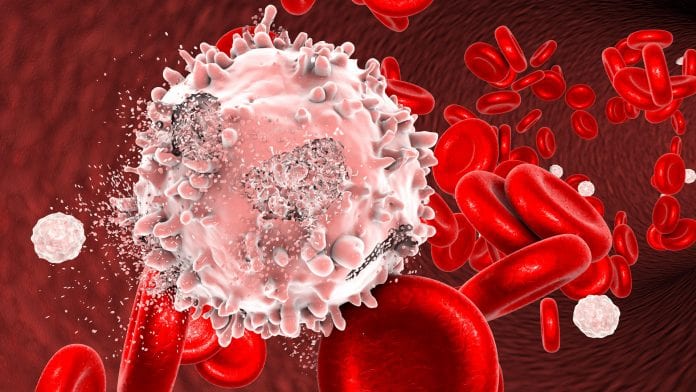
A new way of measuring white blood cell function offers better insights to help patients with sepsis.
The development of this technology for measuring white blood cells, created by investigators from Brigham and Women’s Hospital in collaboration with colleagues at MIT, is a breakthrough for sepsis, as it will be able to provide significantly more prognostic information about patients.
The new approach, results and clinical implications are detailed in a paper published in Nature Biomedical Engineering.
When caring for a patient with sepsis, clinicians must identify the pathogen that is causing a patient’s infection, carefully monitor the patient’s response to antibiotics and supportive measures and prevent potential organ failure and death.
Most of the time, physicians can control the infection itself, however, what ultimately leads to multi-organ system injury and fatality is the patient’s immune system‘s over-exuberant response.
Currently, testing and bedside diagnostics do not provide clinicians with precise and timely information needed to rapidly change their therapeutic approach.
Technology offers breakthrough for sepsis
The team developed the technology advancement that can offer a breakthrough for sepsis by enabling measurement of the activation and function of white blood cells from a small aliquot of blood from patients with sepsis.
Corresponding author Bruce Levy, chief of the Division of Pulmonary and Critical Care Medicine at the Brigham said: “Our idea was to develop a point-of-care diagnostic test that, instead of focussing on the white blood cell count, would inform us about white blood cell activation state and function.
“It’s been exciting for us, as translational scientists, to work on a solution with outstanding bioengineer colleagues. Together, we’re able to address a truly important clinical problem.”
The new approach has made two advancements.
In the first instance, uses microfluidics, where tiny channels that aligns cells by their size allow investigators to sort out larger white blood cells from smaller red blood cells and other elements of the blood. This requires only microliter quantities of blood instead of millilitres, meaning that saving blood samples from patients could reduce the risk of iatrogenic anaemia among patients.
Secondly, the authors utilised the novel technology for measuring the electrical activity of cells, which changes when white blood cells are activated and can distinguish patients with and without inflammation, such as in sepsis.
This electrical measurement – known as isodielectric separation – gave the team important information about the function and activation state of white blood cells.
The team assessed samples from 18 hospitalised patients and ten healthy subjects, looking at the collected samples over the course of seven days. Both the activation state and function of white blood cells were significantly more predictive of the patient’s clinical course than were white blood cell counts.
Beyond sepsis
The authors note that their findings could have implications beyond sepsis.
Having a way to accurately and precisely measure the immune system’s response in microliter aliquots of blood could be useful in monitoring patients receiving immune modulating therapies, including treatment with immune checkpoint inhibitors for cancer or treatment with immunosuppressive drugs after an organ transplant.
A more precise diagnostic test for the immune system’s activity would enable clinicians to adjust their immune modulating therapies to maximise benefit and minimise risk for individual patients.
Co-first author Bakr Jundi, a researcher in the Levy lab, said: “We’re excited to take the next steps forward. As physicians try to understand how sepsis affects patients and how we can better monitor patients, we hope this technology will help to address some of the main issues clinicians face.”









